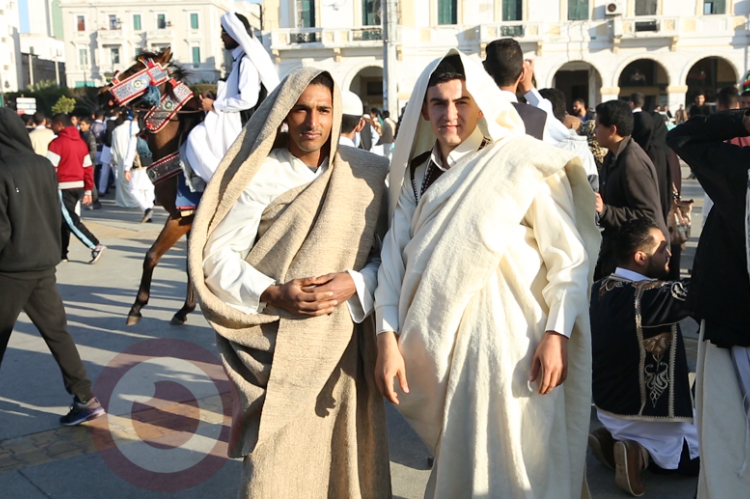The Jard or “Holy” is a traditional Libyan costume for men, the simplest item of clothing possible. It’s a single length of fabric, about 4-6 × 1.5 m in length, it spans all of Libyan society, from middle-class citizens to billionaires, including the rulers.
In the old days, the Jard was used for clothing, bedding, and as a tent when travelling. It was even very handy in getting water from the well, whereas these days it is mostly present in festivals and special occasions, including weddings. When the bride leaves her parents' home, it is customary to hold up her father's Holy as a passage to pass under it, along with other customs that some still maintain to this day. It is also used in melancholy events, where the man's coffin is covered with the Jard during his funeral.
The Jard is often white in colour, the brown one is rare and it's usually worn in winter times.
To wear it you need to make a ring with a knot no bigger than a small apricot called a Tukumia. Then you wrap it around your left arm while the right arm remains free, leaving the rest to cover your head. It was shameful not to know how to wrap yourself in the Jard in the dominant culture of the old days.
The origin of this custom dates back to ancient times, it is similar to that worn by the nobles of Rome. Many travellers and scholars have mentioned that the Roman dress is derived from ancient Greek dress and that the Greeks have passed the Jard from the ancient Libyans, including the Italian historian Giulia Narduchi in his book "Barqa since the Greek Settlement." This was also confirmed by the Danish philologist Birket-Smith, K in his book “The Paths of Culture” (1965, p. 183).
The Jard used to be made at home by women through a manual machine called the Masda. The woman sits down to weave the yarns of wool, clean it, trim it and spin it between her fingers in an unparalleled way, accompanied by her neighbour's support, whether by taking part in the weaving process, preparing tea in the Libyan way, or singing along together folk songs and poetry, so time will pass quickly as it may take a year to complete the task.
The Masda
There were rituals to be followed during the weaving process, for instance, you weren't allowed to weave on the Masda at night, or if some body dies in the neighbourhood, you have to stop for a period of time before resuming the work, and there are certain days you couldn't start a new work on, simple people believed that violation of these rituals could bring harm and bad luck to their lives.
Though it is the simplest costume in design among other traditional dresses across Libya, it's also associated with the Libyan Jihad period and coupled with the icon of Libyan Jihad, Omar al-Mukhtar, who was captured and executed in this costume.








